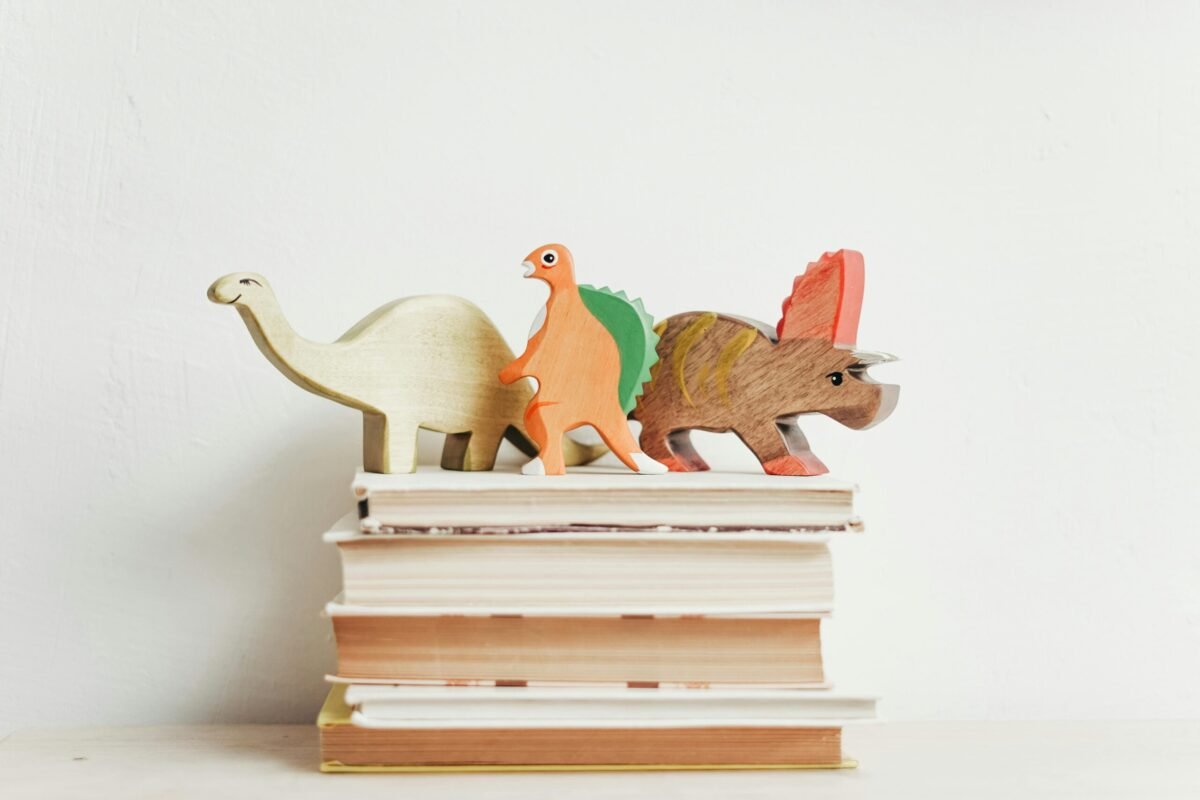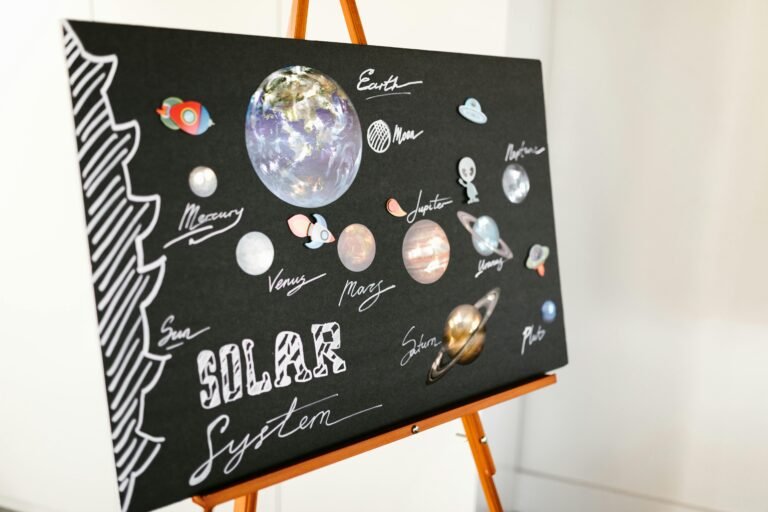There’s something timeless about dinosaurs; kids (and adults!) just can’t get enough of them. And whether you’re diving into fossils, extinction, or paleontology careers, pairing engaging websites with picture books can make your lesson unit both informative and unforgettable.
These 10 educator-approved sites offer videos, activities, interactives, and virtual field trips that blend beautifully with books that spark discussion, writing, and hands-on science.
Each site on our list includes:
Why it’s worth knowing
What it’s best for
A teaching tip to try
List of 10 Websites for Teaching Kids About Dinosaurs and Fossils
1. American Museum of Natural History – OLogy: Paleontology
Why it’s worth knowing:
Offers hands-on activities, fossil facts, and expert Q&As from one of the most respected science museums in the world.
Best for:
Virtual field trips and nonfiction exploration.
Note:
Use their “What’s a Fossil?” activity after reading Fossil by Bill Thomson.
2. DK Find Out – Fossils and Paleontology
Why it’s worth knowing:
Beautiful visuals and simple language make this a perfect introduction to fossil science.
Best for:
Vocabulary development and building background knowledge.
Note:
Assign students a fossil to “research” and create a trading card using facts from the site.
3. National Geographic Kids – Dinosaurs
Why it’s worth knowing:
Profiles of over 20 dinosaur species, plus maps and discovery facts, all with high-interest visuals.
Best for:
Reading comprehension and independent research.
Note:
Let students create a “Dino Fact vs. Fiction” chart after reading a fictional dinosaur book.
4. The Paleontology Portal – Kids’ Resources
Why it’s worth knowing:
Created by paleontologists, this portal gives kids access to real science tools like geologic timelines and fossil maps.
Best for:
Timeline activities and understanding Earth’s layers.
Note:
Have students plot where their book’s dinosaur lived on the interactive map.
5. Smithsonian NMNH – Fossil Hall
Why it’s worth knowing:
Home to one of the most famous dino exhibits, with virtual tours and digital learning tools.
Best for:
Museum-inspired inquiry and writing prompts.
Note:
Use the site’s 3D fossil viewer to compare real fossils to illustrated ones in picture books.
6. Scholastic Learn at Home – Dinosaurs
Why it’s worth knowing:
Grade-leveled nonfiction readers and printable activities that support ELA and science together.
Best for:
Differentiated literacy centers.
Note:
Match a Scholastic nonfiction reader to a fiction title like Saturday Night at the Dinosaur Stomp for compare/contrast lessons.
7. BBC Bitesize – Prehistoric Life
Why it’s worth knowing:
A UK-based site with clear explanations, interactive animations, and videos on fossils and early life.
Best for:
Visual learners and quick content reviews.
Note:
Use their “Fossils” explainer before reading How the Dinosaur Got to the Museum to preview key concepts.
8. UCMP – University of California Museum of Paleontology – Kids & Educators Section
Why it’s worth knowing:
Rich science content, interactive fossil records, and lesson plans from a leading research university.
Best for:
Deep dives into scientific vocabulary and fossil formation.
Note:
Introduce the concept of trace fossils before reading When Sue Found Sue to expand vocabulary.
9. PBS LearningMedia – Prehistoric Life & Dinosaurs
Why it’s worth knowing:
Short videos, animations, and standards-aligned lessons about dinosaurs, fossils, and extinction.
Best for:
Multimedia-based instruction and cross-curricular lesson planning.
Note:
Play a short PBS video, then write a response using a character from a dinosaur book.
10. NASA’s Earth Observatory – Ancient Earth & Extinction Events
Why it’s worth knowing:
While not dino-specific, this site offers fantastic satellite images, extinction science, and Earth history data for upper elementary students.
Best for:
Connecting climate change, asteroid impacts, and Earth systems to dino extinction.
Note:
After reading The Dinosaurs of Waterhouse Hawkins, ask students what it would be like to build a museum after such an event.
Book Pairings That You’ll Love
Here are some great books that you can pair these websites with to build literacy and science connections as we explore dinosaurs and fossils:
Digging Up Dinosaurs by Aliki
A nonfiction classic that explains how fossils are found, studied, and displayed in museums.
Best for: Grades 1–3 | Science Literacy + Reading for Information
Saturday Night at the Dinosaur Stomp by Carol Diggory Shields
A hilarious, rhyming romp that imagines dinos having a dance party—great for rhythm, creativity, and dino name pronunciation.
Best for: Grades K–2 | Fluency + Movement Integration
Fossil by Bill Thomson
A nearly wordless book that tells the story of a child who uncovers fossils with magical, life-like results. Rich in visual detail.
Best for: Grades 1–4 | Visual Literacy + Writing Prompts
How the Dinosaur Got to the Museum by Jessie Hartland
Explains the journey of a fossil from discovery to museum exhibit using fun repetition and vivid illustrations.
Best for: Grades 2–5 | Sequence + Informational Text Structure
When Sue Found Sue by Toni Buzzeo
A beautifully illustrated biography of Sue Hendrickson, the paleontologist who discovered the most complete T. rex fossil.
Best for: Grades 2–5 | Women in Science + Nonfiction Reading
Tiny T. Rex and the Impossible Hug by Jonathan Stutzman
While not strictly scientific, this story builds empathy and resilience using a lovable little dinosaur.
Best for: Grades K–2 | SEL + Growth Mindset
In Closing
Dinosaurs may be ancient, but learning about them never goes extinct. By pairing vibrant picture books with high-quality websites, you’ll give students both the narrative and scientific tools to understand Earth’s prehistoric past.
Whether you’re teaching about fossils, geologic time, or dino diversity, these resources will help you plan a unit that’s both informational and unforgettable.
Try one website + one book pairing this week, and let the learning roar to life.
Are you looking for more classroom-ready ideas like this one? Head back to our main resource hub to keep exploring resources for teachers.


 Why it’s worth knowing
Why it’s worth knowing






